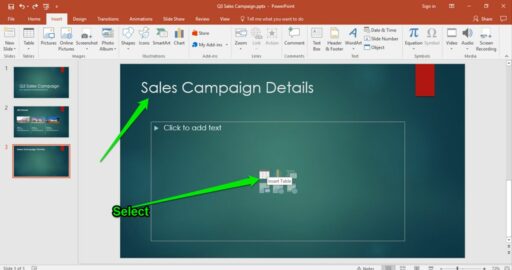Table of Contents
In the competitive field of construction, leveraging cutting-edge data analytics is pivotal for gaining enhanced insights and driving project success. Dodge Data and Analytics has emerged as a powerhouse of information, providing construction professionals with the tools and intelligence needed to optimize every aspect of their projects. This article explores how harnessing Dodge Data and Analytics can revolutionize the construction industry, from the evolution of Building Information Modeling (BIM) in the water sector to strategic financial management and continuous professional development.
Key Takeaways
- Dodge Data & Analytics significantly contributes to the growth of BIM adoption in the water sector, leading to more informed decision-making in plant design.
- Integrating Dodge Data with construction software like Autodesk Construction Cloud and hardware improves workflow efficiency and project outcomes.
- Customer testimonials highlight the tangible benefits of BIM for plant projects, including enhanced multidisciplinary coordination and minimized data loss.
- Strategic financial management tools, such as construction accounting ERP solutions, enable better project cost control and financial reporting.
- Investing in learning and development through systems like Pinnacle Series and KnowledgeSmart is essential for staying competitive in the evolving construction industry.
The Evolution of BIM in the Water Sector

Dodge Data & Analytics SmartMarket Report Highlights
The latest SmartMarket Report by Dodge Data & Analytics unveils significant growth in Building Information Modeling (BIM) adoption within the water sector. This surge is reshaping how plant projects are conceived, designed, and executed.
Key findings from the report indicate that BIM is not just a passing trend but a substantial shift in the industry:
- Enhanced project visualization and simulation capabilities
- Improved accuracy in cost estimation
- Streamlined collaboration among stakeholders
The integration of BIM into water infrastructure projects promises to deliver improved efficiency and better outcomes.
As the industry continues to evolve, these insights from Dodge Data & Analytics serve as a valuable benchmark for companies looking to leverage BIM for competitive advantage.
Impact of BIM Adoption on Plant Design
The adoption of Building Information Modeling (BIM) has revolutionized plant design, offering a comprehensive digital approach that enhances the entire project lifecycle. BIM’s integration into plant design has led to the creation of detailed 3D digital representations, which facilitate better decision-making and coordination among stakeholders.
With BIM, professionals can gain insights earlier in the process, leading to improved project outcomes. The use of BIM in plant design not only optimizes workflows but also minimizes data loss, ensuring that valuable information is retained from concept to completion.
The strategic implementation of BIM in the water sector has seen a rapid growth, reflecting its potential to transform infrastructure planning and execution.
The table below illustrates the productivity gains reported by users of Autodesk AutoCAD Plant 3D toolset, highlighting the efficiency improvements in common design tasks:
| Task | Without BIM | With BIM | Productivity Gain |
|---|---|---|---|
| P&ID Creation | 100% | 74% | 26% |
| 3D Modeling | 100% | 74% | 26% |
| Isometric Extraction | 100% | 74% | 26% |
Adopting BIM for plant projects has garnered positive feedback from customers, who have experienced significant benefits in terms of productivity and team collaboration.
Future Trends in Water Infrastructure Planning
As the water sector continues to evolve, future trends in infrastructure planning are emerging, driven by technological advancements and sustainability goals. The integration of Building Information Modeling (BIM) with other technologies is anticipated to enhance the efficiency and accuracy of water infrastructure projects.
- Innovative materials and construction methods are expected to play a significant role in future developments.
- The use of big data and analytics will likely become more prevalent, aiding in the optimization of supply chain operations and predictive maintenance.
- Sustainability and resilience will be at the forefront, with an emphasis on designing infrastructure that can withstand environmental changes.
Embracing these trends will be crucial for stakeholders to ensure that water infrastructure systems are not only efficient but also adaptable to future challenges.
Realizing the Full Potential of BIM for Plant Projects

Customer Testimonials on BIM Benefits
The transition to Building Information Modeling (BIM) has been a game-changer for many in the construction industry, particularly in the realm of plant projects. Clients have reported significant improvements in project outcomes due to the adoption of BIM methodologies. These benefits range from enhanced productivity to better team collaboration, all of which contribute to a more efficient project lifecycle.
- Enhanced productivity and efficiency
- Improved team collaboration
- Higher quality outcomes
- Reduced project timelines
- Decreased costs
The integration of BIM into plant projects has not only streamlined workflows but also provided a platform for continuous improvement and innovation.
Business intelligence, a key component of BIM, leverages data from various sources to provide actionable insights for informed decision-making. This aspect of BIM enhances monitoring, workflows, and decision-making processes, leading to improved business performance and growth.
Enhancing Multi-disciplinary Team Coordination
In the realm of plant design, enhancing multi-disciplinary team coordination is pivotal. Autodesk solutions support professionals throughout the project lifecycle, fostering an environment where collaboration is streamlined and data loss is minimized. This synergy is not only about technology but also about reinforcing a culture where teams can thrive in health and productivity.
By integrating BIM into the workflow, teams can gain insights earlier, which is crucial for timely and informed decision-making.
The benefits of improved coordination are manifold, including:
- Reduced design conflicts and rework
- Enhanced communication across different disciplines
- Streamlined project timelines
- Improved quality of the final plant design
It is essential to leverage learning resources and technical proficiency to realize these benefits fully. The SethT website, for instance, offers content that can enrich one’s understanding of various data and development topics, which can be instrumental in optimizing workflows for tools like AutoCAD Plant 3D.
Minimizing Data Loss Across Project Lifecycles
In the realm of construction, minimizing data loss across project lifecycles is crucial for maintaining efficiency and ensuring the longevity of building management. A lifecycle approach to building management can optimize the entire process, from design to operation. However, a staggering 95% of data generated during construction is not transferred to the operational phase, leading to significant inefficiencies.
By implementing robust data management strategies and utilizing advanced BIM tools, stakeholders can preserve critical information throughout the project’s duration. This proactive approach can prevent the loss of valuable insights that are essential for informed decision-making and continuous improvement.
To address this challenge, several key practices can be adopted:
- Establishing a centralized data repository to ensure all project information is accessible and secure.
- Utilizing BIM software that supports seamless data integration and collaboration among all parties involved.
- Regularly updating and maintaining data throughout the project to avoid information becoming outdated or irrelevant.
- Training team members on the importance of data preservation and the use of BIM tools to facilitate this process.
Integrating Dodge Data with Construction Software and Hardware

Synergy with Autodesk Construction Cloud and Bluebeam
The integration of Dodge Data with Autodesk Construction Cloud and Bluebeam Revu is transforming the way construction projects are managed. By leveraging the strengths of both platforms, teams can now enjoy a seamless experience from design to construction.
- Autodesk Construction Cloud offers a suite of tools that enhance collaboration, including BIM Collaborate Pro and Autodesk Docs. These tools facilitate real-time data sharing and project management.
- Bluebeam Revu is known for its robust document management capabilities, allowing for efficient markups and data extraction.
The synergy between these software solutions enables a more connected workflow, where data is easily accessible and communication barriers are reduced. For instance, exporting data from Bluebeam Revu to Microsoft 365 tools like Word, Excel, and Powerpoint simplifies the process of creating custom estimating systems and other documentation.
The combined power of Autodesk Construction Cloud and Bluebeam Revu is setting a new standard for project efficiency and data coherence in the construction industry.
Optimizing Plant Design Workflows with Auxalia PlantTools
Auxalia PlantTools offer a suite of applications that significantly enhance the workflow and functionality of Autodesk Plant Solutions. By integrating these tools into the design process, professionals can achieve a more streamlined and efficient workflow, particularly when working with AutoCAD Plant 3D.
The benefits of utilizing Auxalia PlantTools are evident in the productivity gains reported by users. For instance, the Autodesk AutoCAD Plant 3D toolset has been shown to boost productivity by up to 74%, demonstrating substantial time savings for common plant design tasks.
By focusing on workflow optimization, Auxalia PlantTools not only improve project efficiency but also contribute to better overall plant design outcomes.
Professionals in the plant industry can access a range of services to support the implementation and customization of these tools, ensuring that they are tailored to meet the specific needs of each project.
Leveraging Hardware Innovations for Construction Insights
The integration of cutting-edge hardware technologies is revolutionizing the way construction insights are gathered and analyzed. Innovative hardware solutions, such as 3DConnexion’s advanced input devices, are enhancing the precision and efficiency of construction projects. These tools facilitate a more immersive and intuitive interaction with digital models, leading to better decision-making and project outcomes.
Key hardware players in the construction industry include Dell, HP, Lenovo, and Microsoft Surface, each offering robust computing solutions that support complex design and simulation tasks. The synergy between these hardware advancements and construction software creates a powerful ecosystem for project management and execution.
- 3DConnexion: Advanced input devices for 3D modeling
- Dell: High-performance computing for design and simulation
- HP: Reliable workstations for engineering applications
- Lenovo: Durable laptops and desktops for on-site use
- Microsoft Surface: Versatile tablets for fieldwork and presentations
Embracing these hardware innovations is essential for staying competitive in a rapidly evolving industry. It’s an exciting time to be working in construction, with new technologies continually emerging to shape the future of the sector.
Strategic Financial Management in Construction

Construction Accounting ERP Solutions
In the realm of construction, strategic financial management is pivotal for the success of any project. Construction Accounting ERP (Enterprise Resource Planning) solutions are at the forefront of this management, offering a comprehensive suite of tools designed to streamline financial processes and enhance accuracy in reporting.
Key features of Construction Accounting ERP solutions include:
- Manufacturing – BOM (Bill of Materials) Automation
- Commercial – Project Cost Control
- Modular – Assembly to Field
- Enterprise Payroll / HR
- Financial Reporting
By integrating these features, construction firms can achieve a more cohesive financial oversight, ensuring that every dollar is accounted for and every financial decision is data-driven.
Cloud-based software platforms are revolutionizing the way construction businesses handle their financial data. With real-time access to financial insights, companies can make informed decisions swiftly, leading to improved collaboration and overall project efficiency.
Project Cost Control and BOM Automation
Effective project cost control and Bill of Materials (BOM) automation are pivotal in streamlining construction processes. By leveraging BOM software, companies can ensure accuracy and efficiency from the initial design phase through to construction and maintenance. Tasks such as data entry, component updates, and BOM generation can be automated, freeing up team members to focus on more strategic initiatives.
Embracing BOM automation tools not only reduces the likelihood of human error but also significantly cuts down on time spent on manual tasks.
The integration of BOM software with construction accounting ERP systems allows for real-time tracking of materials, costs, and project progress. This integration is crucial for maintaining budget adherence and ensuring financial transparency across all stages of a project.
Here is a list of key benefits of BOM automation in construction:
- Improved accuracy in material tracking
- Enhanced collaboration across disciplines
- Streamlined workflow and reduced manual data entry
- Better alignment between design and actual construction
Adopting these practices leads to more predictable project outcomes and a stronger bottom line.
Enterprise Payroll, HR, and Financial Reporting
In the realm of construction, strategic financial management is pivotal for the success and sustainability of projects. Enterprise Payroll, HR, and Financial Reporting systems play a crucial role in this domain, ensuring accuracy and compliance across the board. These systems are designed to streamline complex processes, from managing employee data to generating detailed financial reports.
The integration of these systems with construction-specific software enhances their utility. For instance, coupling financial reporting tools with platforms like Autodesk Construction Cloud or MYOB can lead to more efficient project management and cost control. This synergy allows for real-time data analysis and decision-making, which is essential in the fast-paced construction industry.
The adoption of advanced ERP solutions in construction financial management marks a significant shift towards digital transformation, optimizing operations and fostering growth.
Here is a brief overview of key software and hardware resources that support enterprise financial management in construction:
- Autodesk Construction Cloud
- MYOB
- Bluebeam
- ProEst
- Autodesk Takeoff
- 3DConnexion hardware
These tools and technologies are instrumental in enhancing the financial management landscape within the construction sector, providing a competitive edge to businesses that embrace them.
Enhancing Learning and Development in Construction

The Role of Learning Management Systems
In the dynamic environment of the construction industry, Learning Management Systems (LMS) have become pivotal in fostering technical proficiency and continuous professional development. A construction LMS is tailored to address the unique challenges of the sector, facilitating streamlined onboarding and skill enhancement.
The adoption of an LMS within construction firms can significantly impact the efficiency of educational resource distribution. For instance, it can provide access to the latest insights on energy-efficient practices and optimization techniques, crucial for roles such as mining efficiency improvement.
The right LMS empowers organizations to maintain a competitive edge by ensuring that their workforce is up-to-date with the latest industry standards and technologies.
Moreover, the selection of an LMS should be strategic, considering the specific needs of the construction industry. The table below showcases some of the top-rated LMS platforms for the construction industry in 2024, highlighting their key features and benefits.
| Rank | LMS Platform | Key Features |
|---|---|---|
| 1 | LMS A | Mobile-friendly, Customizable courses |
| 2 | LMS B | VR integration, Real-time tracking |
| 3 | LMS C | Compliance management, Interactive content |
Knowledge Transfer through Pinnacle Series and KnowledgeSmart
In the realm of construction, effective knowledge transfer is pivotal for maintaining high standards of workmanship and ensuring that all team members are up-to-date with the latest industry practices. Pinnacle Series and KnowledgeSmart have emerged as key players in facilitating this essential flow of information.
- Pinnacle Series offers a comprehensive learning management system that provides access to a wide array of training resources, including AutoCAD, Revit, and Navisworks Manage training.
- KnowledgeSmart delivers tailored assessments and learning paths, helping firms to identify knowledge gaps and upskill their workforce accordingly.
By leveraging these platforms, companies can systematically improve technical proficiency across their teams, leading to enhanced project outcomes.
The integration of these learning solutions into daily workflows is not just about individual growth; it’s about elevating the entire team’s capabilities. As construction projects grow in complexity, the ability to quickly disseminate and apply new knowledge becomes a competitive advantage.
Staying Ahead with Continuous Professional Development
In the dynamic field of construction, continuous professional development (CPD) is essential for staying ahead. CPD ensures that professionals keep their skills and knowledge up-to-date, allowing them to remain competitive and effective in their roles.
The CPD Certification Service recognizes construction courses that contribute to individual growth and industry advancement. By engaging in accredited CPD activities, professionals can demonstrate their commitment to self-improvement and excellence in their field.
Embracing a culture of learning and development within an organization can lead to improved performance and innovation.
Technical proficiency is bolstered by a variety of learning resources available to construction professionals. These include industry-specific training programs and tools such as Pinnacle Series and KnowledgeSmart, which facilitate the acquisition of new skills and the application of best practices.
- Pinnacle Series
- KnowledgeSmart
- Adobe
- CTC
- Enscape
- FARO
- KobiLabs
By actively participating in CPD, individuals not only enhance their own careers but also contribute to the collective expertise of the construction industry.
Conclusion
In summary, Dodge Data & Analytics provides a comprehensive suite of tools and insights that are indispensable for professionals in the construction industry. From the detailed SMARTMARKET reports to the extensive list of software and services like Autodesk Construction Cloud, BIM Collaborate, and Bluebeam, these resources empower stakeholders to adopt BIM for plant design, optimize workflows, and enhance financial reporting. The benefits of leveraging these tools are echoed by customer insights and underscored by the rapid growth of BIM adoption across sectors. As we have explored in this article, utilizing Dodge Data & Analytics not only facilitates better project outcomes but also drives innovation and efficiency in construction processes. It is clear that those who harness these insights and integrate them into their operations will be well-equipped to lead in the competitive landscape of construction and design.
Frequently Asked Questions
What is the significance of the SmartMarket Report for the water sector?
The SmartMarket Report by Dodge Data & Analytics highlights the rapid growth of BIM (Building Information Modeling) adoption for plant design in the water sector, indicating a significant trend towards more efficient and technologically advanced infrastructure planning and construction.
How does BIM enhance plant design projects?
BIM supports plant professionals across the project lifecycle by providing insights earlier in the process, enhancing multi-disciplinary team coordination, and minimizing data loss. This leads to better BIM solutions and more efficient project execution.
What are some of the key construction software and hardware mentioned for plant design?
Key software includes Autodesk Construction Cloud, Bluebeam, and Auxalia PlantTools. Important hardware mentioned includes products from 3DConnexion, Dell, HP, Lenovo, and Microsoft Surface.
What role do ERP solutions play in strategic financial management for construction?
Construction Accounting ERP solutions are crucial for managing various financial aspects such as BOM automation, project cost control, and enterprise payroll. These systems help streamline financial processes, ensuring accurate and efficient financial management within construction projects.
How do learning management systems contribute to construction industry development?
Learning management systems like Pinnacle Series and KnowledgeSmart facilitate knowledge transfer and continuous professional development. They provide a structured platform for learning and development, which is essential for staying ahead in the rapidly evolving construction industry.
What are the benefits of integrating Dodge Data with construction management software?
Integrating Dodge Data with construction management software enables enhanced data-driven decision-making, improved project visibility, and streamlined workflows. It leverages the power of analytics to provide actionable insights, leading to better project outcomes and operational efficiency.





